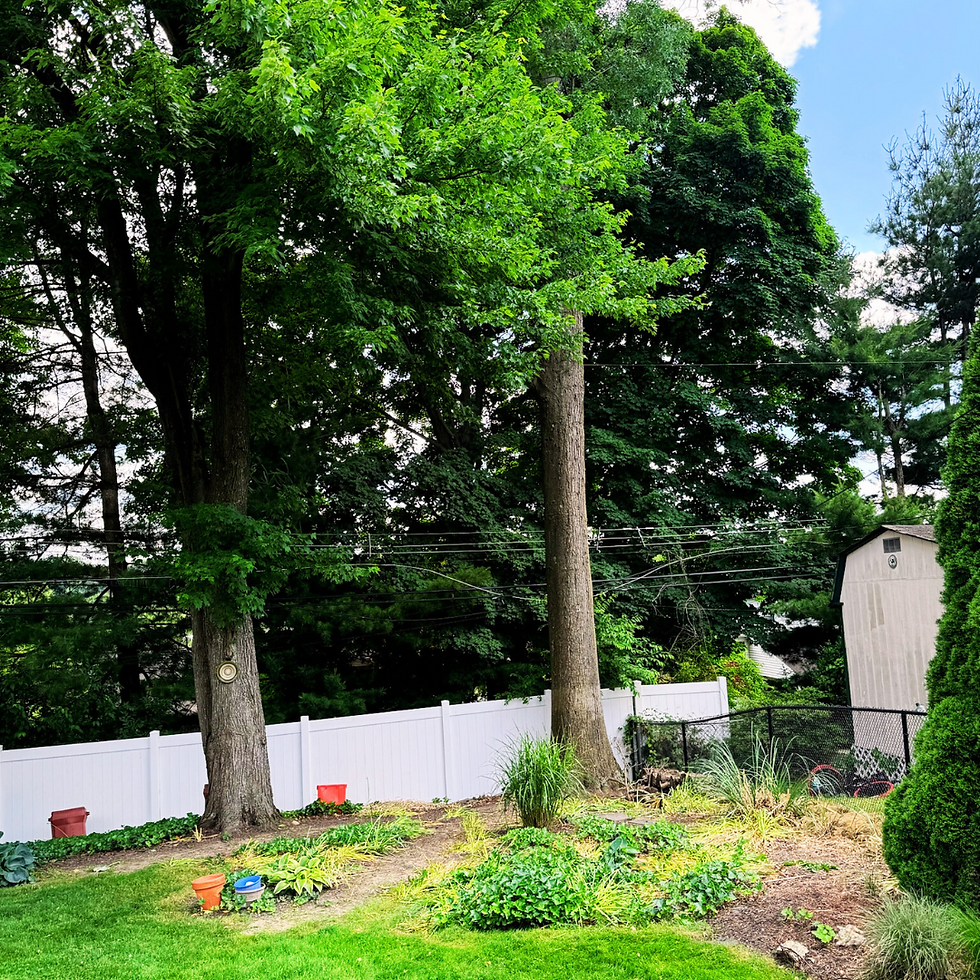Planting with Purpose: Designing a Beautiful and Resilient Landscape
- Sabia Staff
- Aug 20, 2024
- 3 min read
Planting is a crucial element in creating a well-designed landscape. At Sabia Landscaping, we believe that the right planting choices can transform your outdoor space into a beautiful and functional environment that enhances your home's appeal. Whether you're starting from scratch or revitalizing an existing yard, focusing on thoughtful planting can make all the difference.
Why Planting Matters in Landscaping
A well-planned landscape does more than just look good. Planting can boost your home's value, support local biodiversity, and provide a relaxing space for you and your family. Here’s why planting is essential in landscaping:
Curb Appeal: The right mix of planting enhances your home's appearance, making it more inviting and attractive to visitors and potential buyers.
Biodiversity: A diverse selection of plants supports local wildlife, providing food and habitat for birds, bees, and other beneficial creatures. Thoughtful planting choices make your garden an oasis for nature.
Sustainability: Choosing native plants during the planting process reduces water usage and maintenance, creating a more eco-friendly environment.
One of our clients, Beverly M., shared her experience with our planting services, saying, “Every time I walk outside, I feel like I can breathe again. Thank you so much to the entire team. Truly a wonderful experience start to finish. I highly recommend them.”

Planning Your Landscape with Plants
Before you start planting, it's essential to have a solid plan. Here’s how to approach planting within your landscape:
Step 1: Assess Your Space
Evaluate your yard to understand its strengths and weaknesses. Consider sun and shade patterns, soil type, and existing features like trees, shrubs, and pathways. Effective planting starts with a clear understanding of your space.
Identify Problem Areas: Note any drainage issues or spots where previous planting efforts have struggled to thrive.
Highlight Features: Decide which features you want to emphasize, such as a beautiful tree, a seating area, or a water feature. These will guide your planting decisions.
Step 2: Choose the Right Plants
Selecting the right plants is crucial for successful planting. Consider your local climate, soil conditions, and personal preferences when choosing plants.
Native Plants: Native plants are adapted to your region, making the planting process easier. They require less water and maintenance while providing essential habitat for local wildlife.
Northeast Philadelphia & Melrose Park: Consider Eastern Redbud, Butterfly Weed, and River Birch for vibrant blooms and hardy growth.
Rydal & Huntingdon Valley: Opt for Purple Coneflower, Black-eyed Susan, and Switchgrass for a colorful, low-maintenance planting.
Abington & Elkins Park: Choose Sweetbay Magnolia, Virginia Bluebells, and Wild Geranium for elegant planting that offers seasonal interest.
Bucks & Montgomery Counties: Include Eastern Hemlock, Mountain Laurel, and Christmas Fern for lush, evergreen planting.
Seasonal Interest: Incorporate plants that offer seasonal interest, with varying bloom times, foliage colors, and textures for year-round beauty. Layering your planting ensures your landscape is dynamic throughout the seasons.
Layering Plants: Use plants of different heights to create depth and visual interest, from ground covers to tall trees. Layered planting adds dimension to your landscape.

Step 3: Incorporate Hardscaping Elements
While planting is the star of your landscape, hardscaping elements like patios, pathways, and retaining walls add structure and functionality.
Pathways: Design pathways that guide visitors through your garden, creating a sense of journey and discovery alongside your planting efforts.
Patios and Decks: Extend your living space outdoors with patios and decks for dining, lounging, and entertaining, complemented by thoughtful planting.
Water Features: Add a water feature like a fountain or pond to bring tranquility and interest to your landscape, enhancing your planting design.
Maintaining Your Landscape
Once your landscape is established, regular maintenance will keep your planting looking its best. Here are some essential maintenance tips:
Regular Pruning: Prune plants to remove dead or diseased branches, encouraging healthy growth and maintaining the shape of your planting.
Irrigation: Ensure your planting receives adequate water, especially during dry spells. Consider installing an efficient irrigation system to conserve water and maintain plant health.
Pest Management: Monitor plants for pests and diseases, using organic pest control methods to protect your planting without harming beneficial insects.
Conclusion
Creating a beautiful and resilient landscape involves more than just planting; it requires planning, care, and a touch of creativity. At Sabia Landscaping, we're committed to helping you design a space that reflects your style and enhances your quality of life. Whether you're planting new trees, incorporating sustainable practices, or redesigning your yard, our team is here to bring your vision to life.
Contact Us
Ready to enhance your outdoor space with thoughtful planting and design? Contact Sabia Landscaping today at 215-822-3886 for a consultation. Let’s work together to create a landscape you’ll love for years to come!





Comments